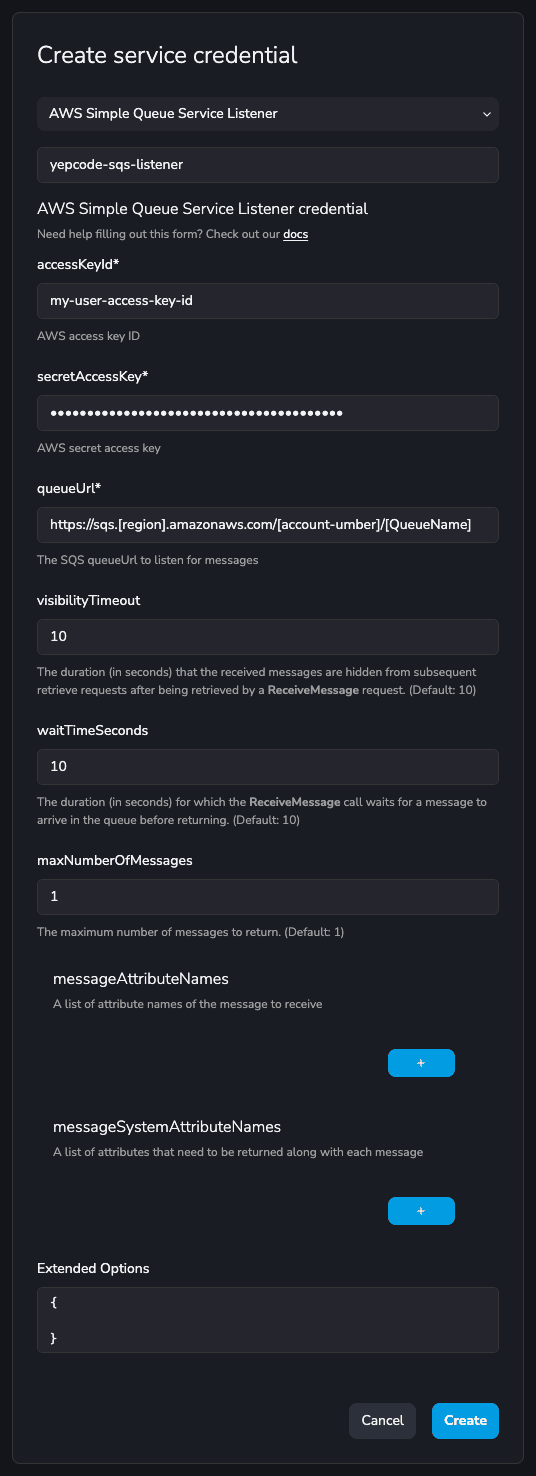AWS Simple Queue Service Listener
Listen for messages published on Amazon Simple Queue Service (AWS SQS) queues.
TagsQueueMessage BrokerSaas
Credential configuration
To configure this credential, you need to fill the credential configuration form with the AWS SQS connection parameters:
accessKeyId and secretAccessKey.
Additionally to the connection information, you'll need to fill the following fields:
queueUrl: URL of the Amazon SQS queue from which messages are received.visibilityTimeout(optional, default=10): duration (in seconds) that the received messages are hidden from subsequent retrieve requests. Aws docs.waitTimeSeconds(optional, default=10): duration (in seconds) for which the call waits for a message to arrive in the queue before returning. If a message is available, the call returns sooner. Aws docs.maxNumberOfMessages(optional, default=1): maximum number of messages to return. Amazon SQS never returns more messages than this value (however, fewer messages might be returned). Aws docs.messageAttributeNames(optional): a list of names of the message attribute to receive. Aws docs.messageSystemAttributeNames(optional): a list of attributes that need to be returned along with each message. Aws docs.
In the extra extended options field, you can include any of the parameters found here.
Here is an example of a filled credential configuration form in YepCode:

AWS SQS Listener snippets available in YepCode editor
note
The title is the triggering text for YepCode to autocomplete the script.
JavaScript
Python
Listener
New listener
const listener = await yepcode.listener.awsSqs('yepcode-sqs-listener');
Start listener with callback message
const callback = (message) => console.log('New message received:', { message });
listener.start(callback);
Start listener with callback message and onCallbackError
const callback = (message) => console.log('New message received:', { message });
const onCallbackError = (error, message) =>
console.error(
"[Process] Error: '%s', processing message: %s",
error.message,
message
);
listener.start(callback, { onCallbackError });
Stop listener
listener.stop();
Listener
New listener
listener = yepcode.listener.aws_sqs("yepcode-sqs-listener")
Start listener with callback message
def callback(message):
print(f"New message received: {message}")
listener.start(callback)
Start listener with callback message and on_callback_error
def callback(message):
print(f"New message received: {message}")
def on_callback_error(error, message):
print(f"Error: '{error}', processing message: {message}")
listener.start(callback, {"on_callback_error": on_callback_error})